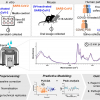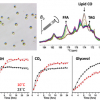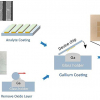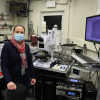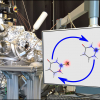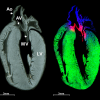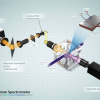Spectroscopy News
A proof-of-concept FT-IR-based saliva COVID-19 testing workflow has investigated the pathophysiological response to a COVID-19 infection through ATR-FT-IR spectroscopy.
Agilent will integrate the AI technology into its lab informatics platforms, enabling customers to automate GC/MS data analysis.
In its largest order in the private space sector, ABB will supply multispectral imaging systems to Canadian data and analytics company EarthDaily Analytics, which will be used to provide near real-time information about natural and human-caused change across the planet.
A Memorandum of Understanding for technical and scientific collaboration will strengthen ties, enhance agricultural research and encourage new technology development.
Researchers from the University of Warsaw have built the first quantum processor in Poland and are putting it to use in spectroscopy. They’ve demonstrated how quantum information processing can efficiently provide information on matter hidden in light.
Researchers from the Leiden Institute of Chemistry have shown proof of principle that live-cell structural changes and metabolic processes can be followed in real time with NMR spectroscopy.
As the nanostructures in optical sensing chips get ever smaller, it becomes increasingly difficult to get molecules onto the device. A new chip using surface-enhanced infrared absorption spectroscopy may be the answer.
Canadian hyperspectral imaging satellite company, Wyvern, has received an investment from Sustainable Development Technology Canada.
Synchrotron light is being used with FT-IR imaging to investigate the role of myelin in brain ageing.
2022 marks Hiden Analytical’s 40th year of continuous and independent operation in the field of mass spectrometry.
A portable, SERS-based breathalyser can distinguish volatile organic compounds in the breath of COVID-positive people in less than 5 min.
Waters has acquired the technology assets and intellectual property rights of Megadalton Solutions, a developer of charge detection mass spectrometry.
Hyperspectral imaging has been shown to detect stress when a plant takes up cadmium, which may lead to methods to keep the heavy within the soil and avoid potential pollution.
A research team has used x-ray photoelectron spectroscopy to observe charge motions in light-excited molecules of thiouracil, a modified nucleobase.
Emberion, a partner in the Graphene Flagship, has raised €6 million in funding to further develop their infrared imaging business including vis-SWIR cameras.
Researchers from the Medical University of South Carolina have used mass spectrometry imaging to study the efficacy and distribution of injected biomaterials for the treatment of heart attack.
fNIRS can determine impairment from cannabis intoxication and could be used as a “breathalyser” on drivers.
A research group at Eindhoven University of Technology has developed a new NIR sensor that is easy to make, comparable in size to sensors in smartphones and ready for immediate use in industrial process monitoring and agriculture.
KPM Analytics has acquired Bruins Instruments, a manufacturer of high-resolution near infrared reflectance and transmission analysers.
Researchers improve their scientific understanding of heterogeneous catalysis by imaging the gas just above the surface of the catalyst.

